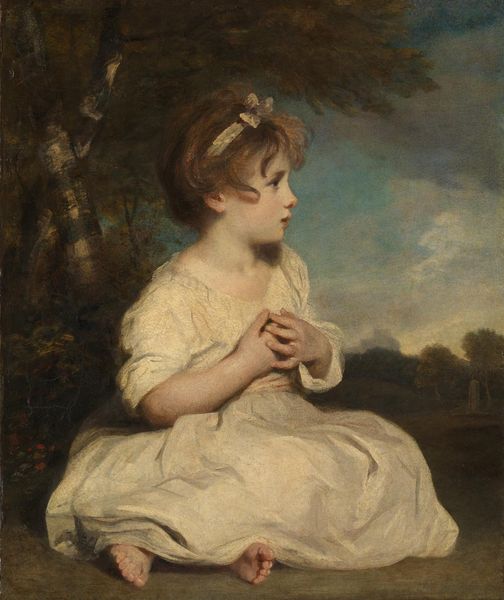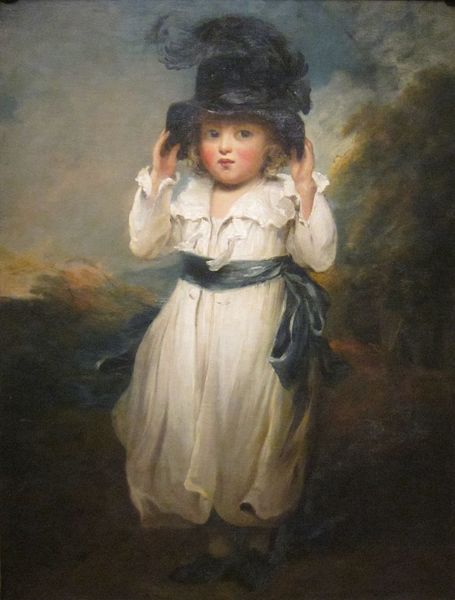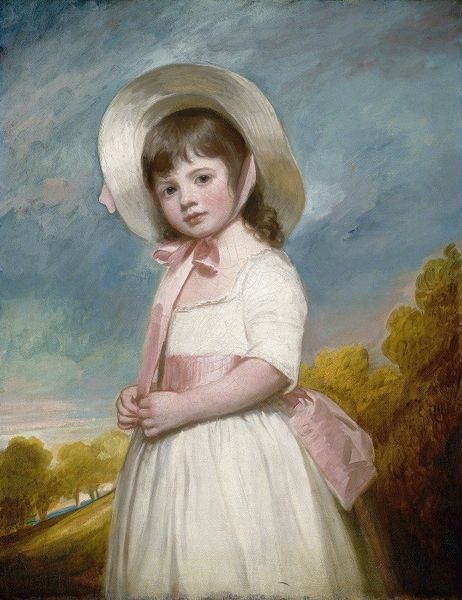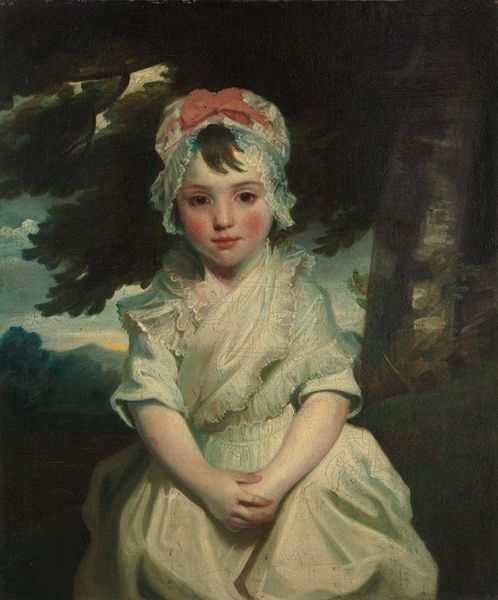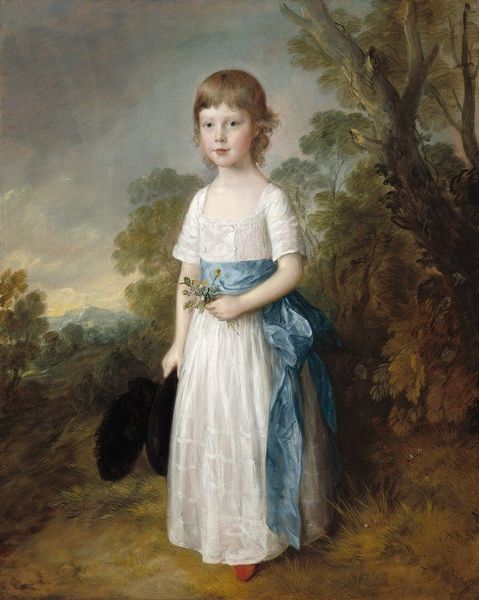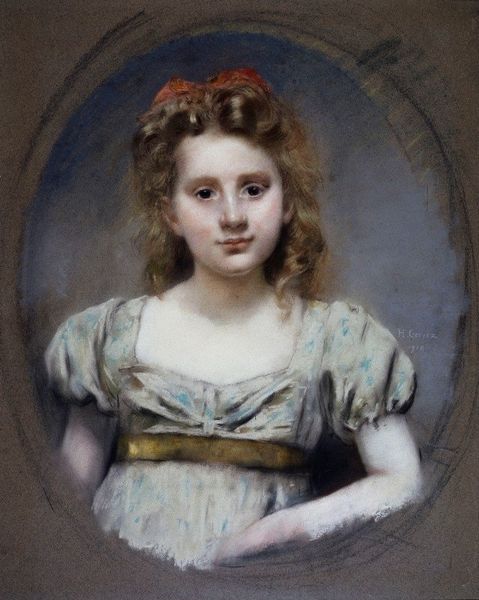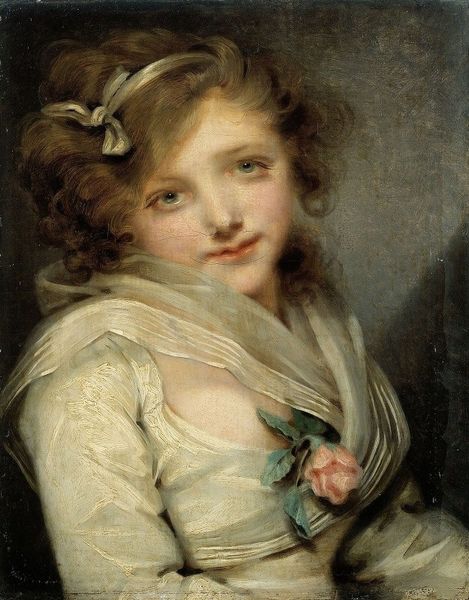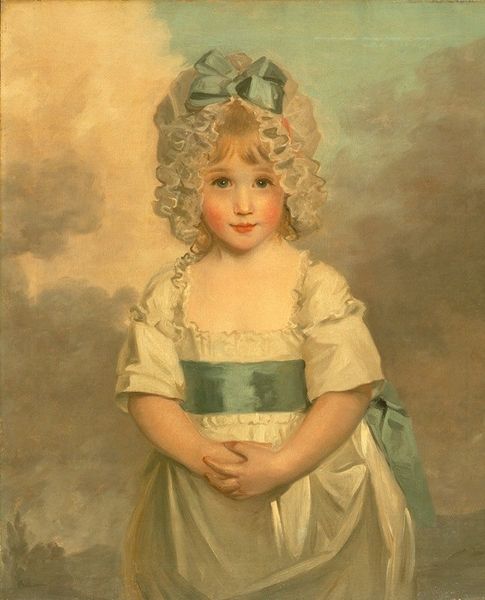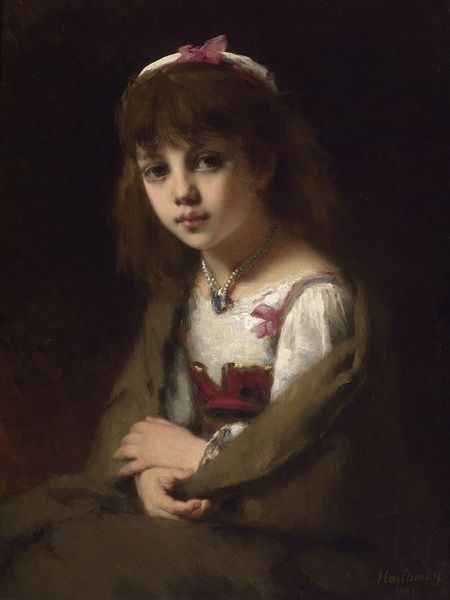
painting, oil-paint
#
portrait
#
painting
#
oil-paint
#
landscape
#
figuration
#
romanticism
Copyright: Public domain
John Hoppner painted Master Meyrick in 1793 with oil on canvas. The ruffled dress and flowers are not merely decorative, but speak to a broader dance between innocence and artifice. Consider the child's dress, a symbol of purity. Yet, it is not simply presented; it is staged, stylized. We see this motif echoing through time, from ancient fertility rites where floral offerings were made to modern-day confirmations. Flowers, too, as ephemeral symbols of life, are not new. Recall Botticelli’s "Primavera" where Flora scatters blossoms, a promise of renewal. Here, the ruffled dress can be associated with masquerade, or ‘travesti’, the symbolic play between genders. This challenges notions of identity, seen even in antiquity with cross-dressing rituals that attempted to reconcile human dualities and gain influence over nature. Does not this image stir something deeper within us? A collective memory, a recognition of the innocence we once possessed, now cloaked in the garments of time.
Comments
No comments
Be the first to comment and join the conversation on the ultimate creative platform.
